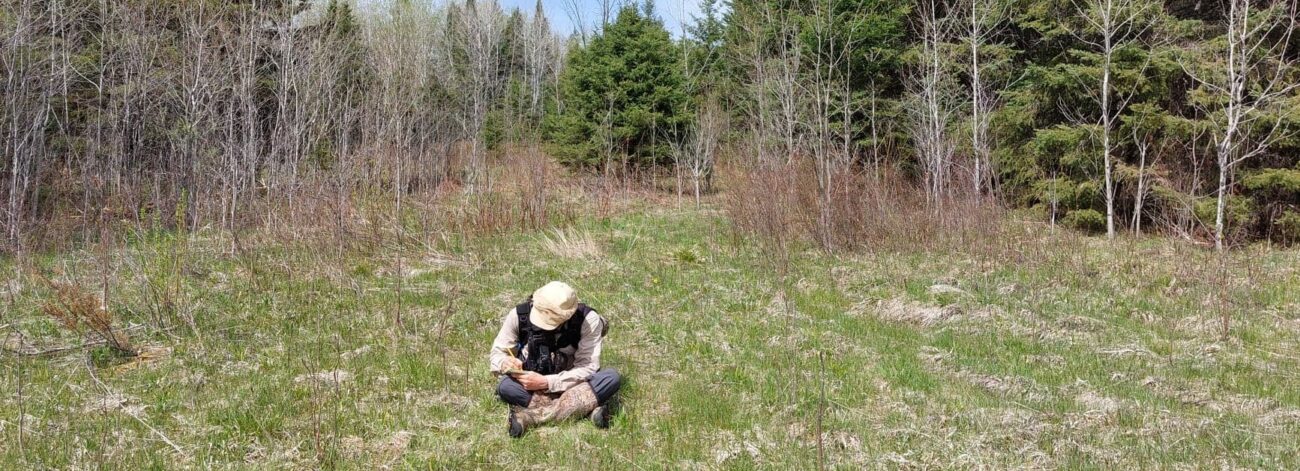Check out what the Couchiching Conservancy Community Science teams and stewardship staff have been up to in 2022.
We also have focused Notes from the field for Winter, Spring and Summer.
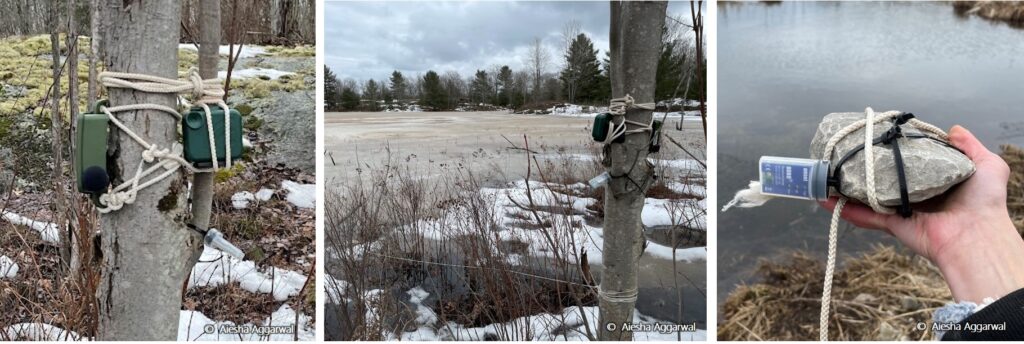
On March 25, Aiesha and Toby set up acoustic monitoring devices on a tree overlooking a wetland. These devices are set to record audio at set intervals each day. A temperature recorder was placed in the water and another was placed on the tree. With this data, we plan to compare the timing of frog calls with the water and air temperatures. Volunteers will be needed in 2023 to analyze the audio data. Sign up here to be notified of when we are recruiting.

Pam Reekie and Cynthia Ferris are frog monitors at the McIsaac Wetland and Whitney Wetland nature reserves. Through the seasons, they have witnessed amphibian lifecycles. On April 12, they sent in reports of male frogs calling from the wetland. On April 24th, they observed leopard frogs engaged in amplexus – a frog mating behavior where the male embraces the females back in preparation for external egg fertilization. On April 30th, frog egg masses were clumped onto underwater vegetation. In June, tadpoles were observed swimming around the wetland pond. On Nov 11th, a Northern Leopard frog was seen in Sucker Creek at Whitney wetland.
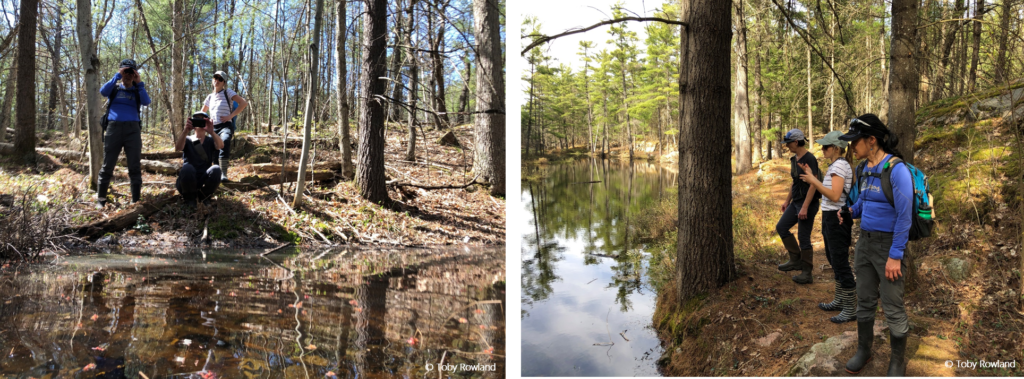
On May 9, Toby Rowland ran a salamander monitoring training session at Adams Nature Reserve. Salamander monitors Nancy Chong, Ruth Henderson, and Nicole Carpenter learned about monitoring methods and salamander identification all while enjoying the trails and natural beauty of Adams Nature Reserve. Attending training sessions is an important part of being a community science volunteer.
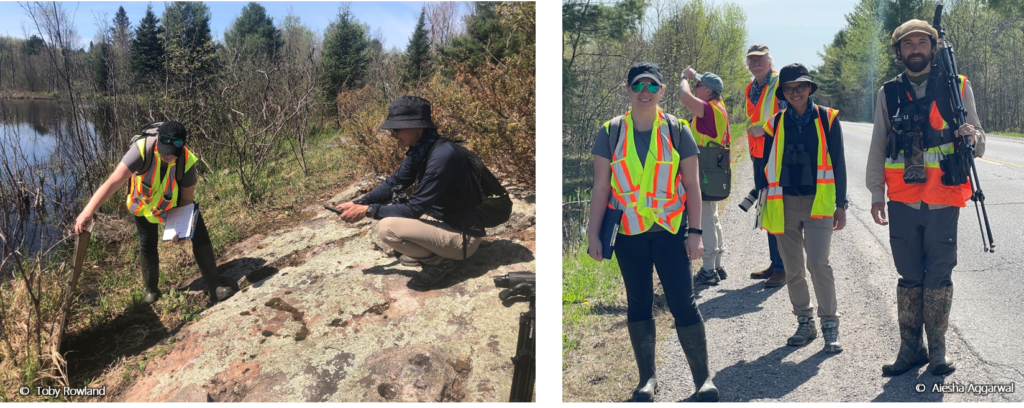
On May 12, 2022 Toby Rowland accompanied new Reptile monitors, Sadie Fischer and Victoria Atencio on their first monitoring visit at Kris Starr Sanctuary. Reptile monitors check under boards for snakes and lizards and use binoculars or scopes to scan the wetland for turtles. On this day, the reptile monitors ran into Wildlife on Road monitors, Ann and Neil Gray, who were monitoring for roadkill along Monck Rd.
We are proud to partner with the Ontario Trillium Foundation to offer this Community Science Program


Once a week in the spring, Toby Rowland checked an array of 24 snake boards as part of a snake monitoring project with Ontario Nature. He observed a garter snake, milksnake, and red-bellied snake. A tub with a grid drawn on the bottom was used to estimate snake length. Please note that we had a permit to handle these snakes.
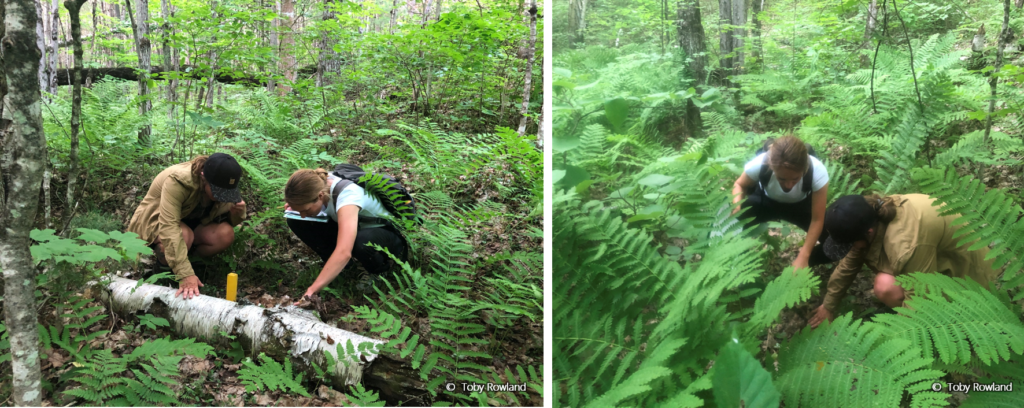
On June 21, Nicole Carpenter and Sam Buchanan Green had their site orientation with Toby Rowland. As new salamander monitors, they were given a tour of the nature reserve and were able to carry out their first monitoring visit with Toby available for support.

On June 28 and 29, Brandon Guoth, a crew of volunteers (Roland, Jamie, Tim, Alan, John) and summer staff (Alysha, Amanda, Adam) spent the hot summer days installing a platform and ladder for the canoe launch at Ron Reid Nature Reserve. In July, they added a winch system for lowering canoes/kayaks into the water. The launch is named after Joan & John Rosebush who were major contributors in the fundraising campaign to purchase this Ron Reid Nature Reserve, and are long-time supporters of the Conservancy. Thank you to John Walinck for constructing the ladder and platform and to Brandon Guoth for coordinating the project.

On August 17th, Holly Brown and Eileen Atkinson made a land stewardship monitoring visit to the Adams Nature Reserve. During their visit they observed a number of interesting fungi including shaggy scalycap fungi. These mushrooms are a preferred food source for red-squirrels and are high in protein compared to other fungi. These fungi have been recorded as poisonous to humans in some cases. (Reminder harvesting is prohibited at CC nature reserves unless you have treaty rights)
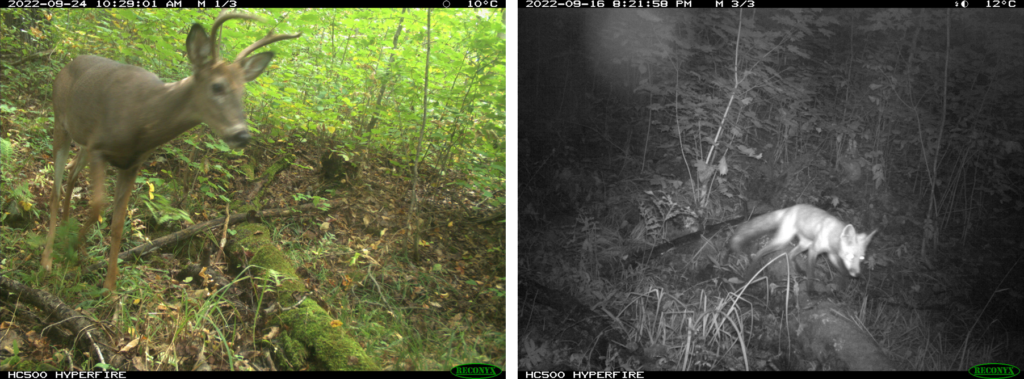
In September, a trail camera set up at an easement in the Carden Alvar area captured these photographs of a white tailed deer and a red fox. Trail cameras are a useful way to learn about the mammals that are present in an area without scaring them away.
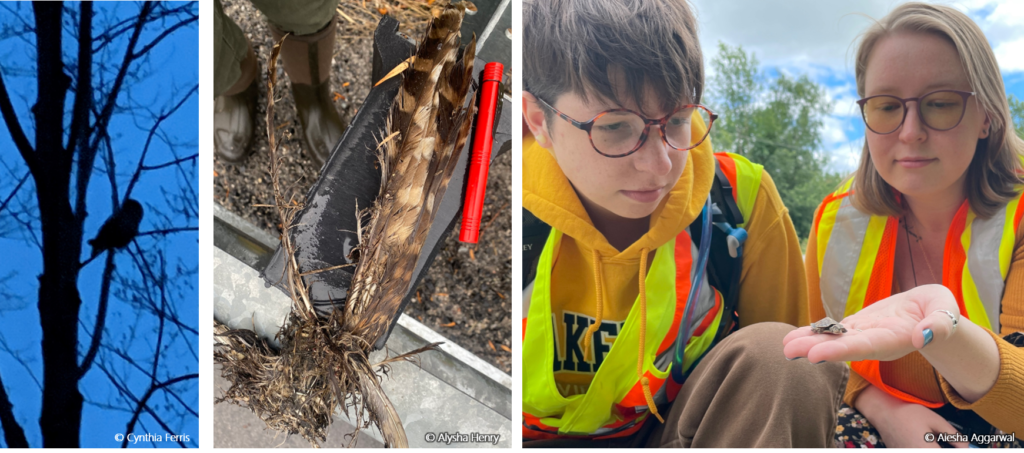
On October 18, Alysha and Toby found the feathers of a Barred Owl while doing Wildlife on Roads monitoring at Monck Rd by Whitney Wetland. The frog monitors at Whitney wetland, Cynthia Ferris and Pam Reekie often send in reports of barred owls calling from the treetops of the forest around the wetland. It is sad to see signs that one of the resident owls was killed by a vehicle collision. The weather around this time had been mild and damp, conditions when amphibians will be on the move. Indeed, Alysha and Toby found multiple frogs and salamanders dead on the road as well. It is likely that the owl was hit while preying on the amphibians on the road. Alysha Henry and Victoria Phillips, the wildlife on road monitors for this site have observed a range of reptiles, amphibians, birds, and mammals that have been killed at this spot on the road. The data that they have collected will be important for future mitigation planning.
We are proud to partner with the Youssef-Warren Foundation to offer this Community Science Program


On November 11, Alysha and Aiesha braved the chilly waters of Sucker Creek at Whitney Wetland to install a water level marker at the Sucker Creek culvert – a passageway that is an important link in a wildlife corridor. Aiesha and Alysha waded through the culvert to experience what animals would feel when they travel through this culvert. The water appeared an opaque black in the darkness of the tunnel. It is no wonder that few species will travel through culverts as they are not very inviting!
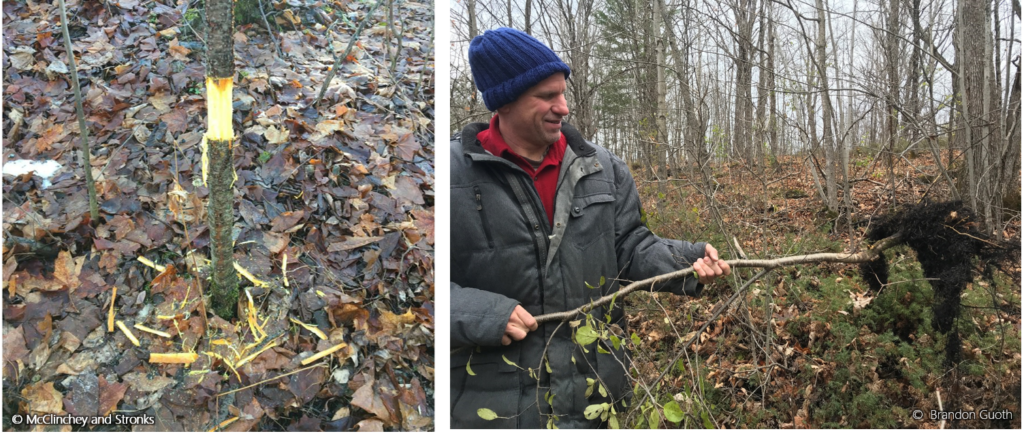
On November 26, 2022 Shawn McClinchey and Glenn Stronks, the Land Stewards for Sweetwater Farm Nature Reserve, identified, mapped, and girdled several large European Buckthorn plants. Unfortunately, invasive buckthorn is present in several areas on the property and is spreading. Buckthorn threatens forest understories and open fields by crowding out native species. By focusing on girdling larger plants we hope to eliminate seed sources and limit re-sprouting.
Thanks for reading our notes from the field. Do you have your own story from the field that you would like to share? If so, please send to Aiesha Aggarwal (aiesha@couchconservancy.ca).
Want more 2022 notes from the field? We also have focused Notes from the field for Winter, Spring and Summer.

